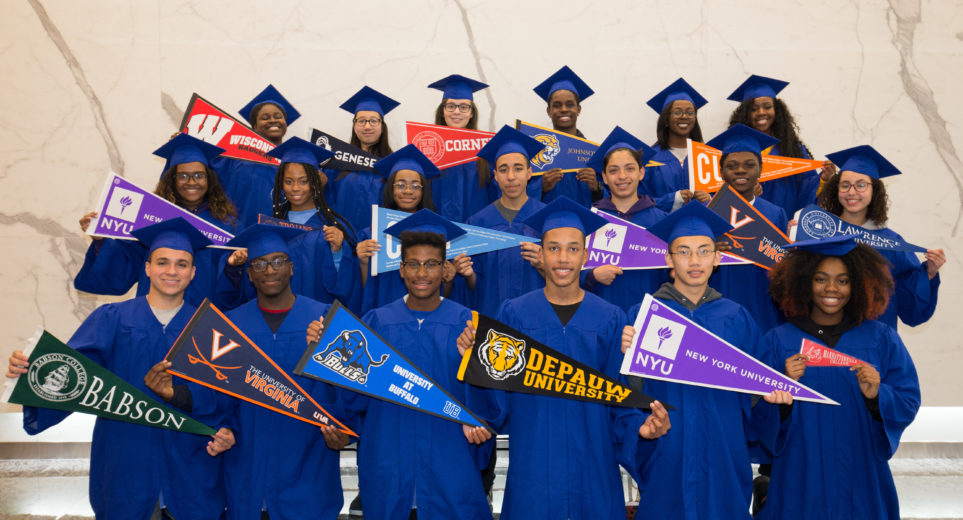
The racial make-up of faculties at American public schools doesn’t match that of their student bodies—and it’s not even close.
While students of color are now the majority in public schools, the number of teachers of color remains low. One group in which this disparity is striking is Latinos, who comprise more than one-quarter of students nationwide, but less than eight percent of teachers. In New York City, 41 percent of students—but only approximately 15 percent of teachers—are Latino.
The impact on educational outcomes could be profound. Research has shown that when students of color have teachers that resemble them, they are held to higher expectations, learn more effectively, and are less likely to drop out.
As an African American teacher, I have had many African American students express gratitude that I was able to answer their questions in more relatable ways than other teachers could. The fact is that everyone learns from a place of lived experience, and when students of color don’t have teachers that share some of their lived experiences, they will struggle.
That’s why school districts and other government groups across the country are engaging in initiatives to recruit and retain more teachers of color. Two years ago, New York City launched a $16.5 million campaign that aimed to get 1,000 men of color teaching by 2017. While only 350 have been hired, the city says 550 more are being trained.
Nonprofits are doing their part too. My organization, Breakthrough New York, hires college students from across the country to serve as Teaching Fellows for low-income middle school students in summer courses that are part of our 10-year college success program.
Breakthrough New York Teaching Fellows
One Teaching Fellow opines on how Breakthrough New York served as an inspiration after the jump…
In 2017, we employed 72 Teaching Fellows and more than half were African American, Latino, or Asian. Crucially, 90% of our Teaching Fellows go on to pursue careers in education. Many, like 22-year-old Mexican immigrant Gabriel Sanchez, cite Breakthrough New York as their inspiration.
Sanchez’s experience teaching science to our students in the South Bronx affirmed his desire to become a teacher, rather than pursue one of the many other career paths available to him. A recent graduate of St. Gregory’s University in Oklahoma, with an honors degree in biomedical science, he recently received emergency teaching certification in the state—which is desperate for teachers—so he can teach high school science from January through May.
In the fall, Sanchez will move back to New York City to teach with the Teach for America program, which places young, aspiring educators in low-income communities and is one of the country’s largest providers of African American and Latino teachers. Gabe believes his students—most of whom will be African American and Latino—will benefit from his presence.
“Students color, particularly immigrants, see me and think ‘if he made it, so can I’,” Sanchez said. “They know that I can relate to some of their experiences. They become more confident in their own abilities and more comfortable speaking up.”
But it’s not only African American and Latino students who benefit from having teachers of color, believes Sanchez, who went to went to schools with predominantly white student populations. “White students also benefit from having teachers of different backgrounds,” he said. “Being exposed to different types of people shows them what the real world is like. Diversity makes us all better.”
While programs like Breakthrough New York help recruit young people of color to teaching, advocates and scholars point to steps that could help keep them in the profession long-term. Boston University School of Education professor Travis J. Bristol suggests tailoring professional development—and possibly school-based training—to address the experiences of teachers of color, and making schools of education more affordable.
Increasing compensation for teachers and teachers-in-training is also crucial. Young people of color are less likely to have significant financial support from their family, which means doing teaching fellowships and internships is less feasible than taking a temporary job which may pay more in the short term. At Breakthrough New York, we address this issue by providing stipend enhancements and housing for our Teaching Fellows with financial need.
Sanchez adds that a shift in our national priorities is needed. “Teaching in this country isn’t valued as much as it is in some other countries,” he said. “If the U.S. starts taking education more seriously and paying teachers more, I think the number of minority teachers will increase.”
